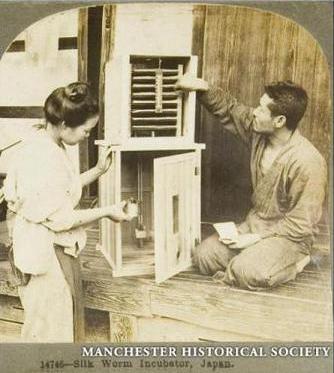



Haru-ko, spring children, is the Japanese name for ordinary silkworms. Natsu-go, summer children, are little valued and seldom cultivated. When new leaves appear upon the mulberry, at the beginning of May, the pieces of paste-board on which the eggs were deposited are brought into the breeding room. They have been carefully protected for nearly a year from rats and everything that might injure the eggs.
The eggs are nearly round, slightly flattened, and have been compared to turnip seeds. When first laid they are yellow, but if fertile they turn gray. There is a small spot on one end called the Micropyle, and through this the worm in hatching gnaws a hole.
The breeding room is kept at a temperature of ten to twenty degrees Centigrade. Exact observations made in Europe show that the egg begins to develop at ten degrees and that it thereafter requires a total heat of about 400 degrees, which is distributed over twenty-four to thirty days. As the worms are hatched out they are transferred to the beds, on which is a supply of tender mulberry leaves. The temperature in the hatching room must not exceed twenty-five degrees Centigrade.

 )
)